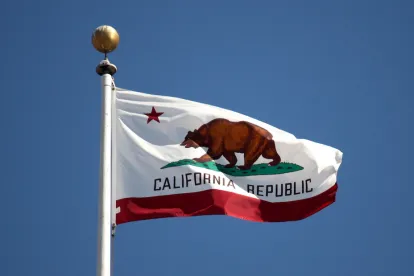On November 30, 2020, the California Office of Administrative Law adopted the California Department of Industrial Relations’ Division of Occupational Safety and Health’s (Cal/OSHA) emergency temporary standards, which were previously adopted by the Occupational Safety and Health Standards Board on November 20, 2020. As a result, these emergency standards are now effective. While many companies have already implemented COVID-19 plans fulfilling previous requirements for reopening under state and/or local government orders, the new Cal/OSHA standards impose numerous new workplace requirements on California employers. Most remarkably, the new standards require that employees who are excluded from work for having or being exposed to COVID-19 continue to be paid while they are off work, subject to certain, potential offsets such as for sick leave. The standards also require employers to have a written COVID-19 prevention plan that addresses the following:
-
A system for communicating information to employees about COVID-19 prevention procedures, testing, symptoms and illnesses, including a system for employees to report exposures without fear of retaliation.
-
Identification and evaluation of hazards — screening employees for symptoms and identifying workplace conditions and practices that could result in potential exposure.
-
Investigating and responding to COVID-19 cases in the workplace — responding immediately to potential exposures by following steps to determine who may have been exposed, providing notice within one business day about potential exposures, and offering testing to workers who may have been exposed at the employer’s expense.
-
Correcting COVID-19 hazards — including correcting unsafe conditions and work practices as well as providing effective training and instruction.
-
Physical distancing — implementing procedures to ensure workers stay at least six feet apart from other people, if possible.
-
Face coverings — providing face coverings and ensuring they are worn at all required times and places and in the appropriate manner.
-
Adopting site-specific strategies such as changes to the workplace and work schedules and providing personal protective equipment (PPE) to reduce exposure to the virus.
-
Positive COVID-19 case and illness recording requirements and making the COVID-19 prevention plan accessible to employees and employee representatives.
-
Removal of COVID-19 exposed workers and COVID-19 positive workers from the workplace with measures to protect pay and benefits.
-
Criteria for employees to return to work after recovering from COVID-19.
-
Requirements for testing and notifying public health departments of workplace outbreaks (three or more cases in a workplace in a 14-day period) and major outbreaks (20 or more cases within a 30-day period).
-
Specific requirements for infection prevention in employer-provided housing and transportation to and from work.
The temporary standards apply to most workers in California. However, the new standards do not apply to the following:
-
Places of employment with one employee who does not have contact with other persons.
-
Employees working from home.
-
Employees already covered by Cal/OSHA’s aerosol transmission standard (applicable generally to certain health care facilities, laboratories and others).
These standards will remain in effect for at least 180 days (or until May 29, 2021). Below are summaries of the more significant changes from the new emergency standards and some recommended actions for California employers to take in response to these standards. However, because of the importance and substance of these changes, we encourage California employers to consult with counsel to ensure swift but full compliance with the new standards.
Exclusion From Work, Paid Time Off and Return-to-Work Criteria
The new standards require employers to exclude from the worksite employees who have (1) tested positive or (2) have an order to isolate from public health authorities (COVID-19 cases)1. An employee does not need to be excluded if they can be temporarily reassigned to work where they do not have contact with other persons.
Employees who are excluded from work for having or being exposed to COVID-19 and who are unable to work from home must continue to be paid while they are off work. The standards provide that employers shall “continue and maintain an employee’s earnings, seniority, and all other employee rights and benefits, including the employee’s right to their former job status.”2 The standards provide that employers may use employer-provided employee sick leave benefits for this purpose as well as benefit payments from public sources in determining how to maintain earnings, rights and benefits, where permitted by law and when not covered by workers’ compensation. This does not appear to be limited to one occurrence either, meaning an employee could potentially be excluded from the worksite multiple times and the employer is obligated to maintain earnings and benefits during each period of time away.3 Employers are also required to provide any employees excluded from the worksite with information on the benefit entitlements.
Under the new emergency standards, employers cannot require a negative COVID-19 test before returning an employee to work. Instead, the standards set forth situation-specific criteria that employees must meet before they can return to work:
-
For COVID-19 cases with symptoms, employees can return to work once:
-
At least 24 hours have passed since a fever of 100.4+ has resolved without the use of fever-reducing medications.
-
COVID-19 symptoms have improved.
-
At least 10 days have passed since symptoms first appeared.
-
-
For COVID-19 cases without symptoms, employees who tested positive but never developed symptoms cannot return to work until a minimum of 10 days have passed since the date of specimen collection of their first positive COVID-19 test.
-
Employees who have been issued an order by a public health authority to isolate or quarantine cannot return to work until either (1) the period of isolation or quarantine is lifted, or (2) if no period is specified, then 10 days from the time the order to isolate was effective or 14 days from the time the order to quarantine was effective.
Practical Tips for Employers: Employers should immediately review existing paid and unpaid leave policies and COVID-19 plans to determine what additional steps are needed to revise or otherwise modify to conform with these new requirements, including but not limited to processes to exclude employees from the worksite as required under the standards and compliance with the additional return-to-work criteria. Employers should also consider how to alert employees of these new standards, with additional attention to managers and human resources personnel to ensure they understand what processes must be followed and the importance of quick action.
The additional requirement to continue to provide pay and benefits to employees excluded from the workplace under these standards is significant. While there may be legal challenges regarding Cal/OSHA’s authority to create such a requirement, employers should consult employment counsel to evaluate this requirement with current policies and the specific workforce.
Potential COVID-19 Exposure Notices
The standards further supplement the notice requirements already in effect for California employers. Specifically, AB 685 requires a written notice of potential COVID-19 exposure to all employees (as well as their exclusive representatives) and employers of subcontracted employees who were on premises at the same worksite. Under the new Cal/OSHA standards, independent contractors must also be included, and the notice must be given within one business day without revealing any personally identifiable information
Apart from notifications to employees, the new standards also change the required reports to local health departments and California agencies:
-
While AB 685 requires employers report to the local health department the qualifying individual’s name, number, occupation, worksite, business address and NAICS code, the new standards require employers to also report the total number of cases, as well as the hospitalization and/or fatality status.
-
The employer must continue to give notice to the local health department of any subsequent COVID-19 cases at the workplace.
-
Employers must report to the Division any COVID-19-related serious illnesses or deaths that occur in the workplace or in connection with employment.
-
Similar to AB 685’s requirement to notify all employees, their exclusive representatives, and employers of subcontracted employees of the employer’s disinfection and safety plan, the new standards require employers to inform their employees and their authorized employee representatives of COVID-19 cleaning and disinfection protocols.
Practical Tips for Employers: Because these standards require swift notice to employees and health agencies, employers should quickly determine and implement a process and procedure for who will ensure compliance with notice requirements (and how). As with the above, ensuring managers and human resources personnel are aware of these requirements and the importance of prompt attention is significant. Employers should also consider drafting template notices for easy customization when notice is required.
Physical Distancing and Face Coverings
The new standards provide that all employees shall be separated from each other by at least six feet in the workplace. There are two exceptions to this requirement: (1) where the employer can demonstrate that six feet of separation is not possible, or (2) momentary exposures while employees are in movement. If the employer demonstrates that it is not possible to maintain a distance of at least six feet, individuals shall be as far apart as possible. At fixed work locations where it is not possible to maintain physical distancing, the employer shall install “cleanable solid partitions” that reduce transmissions between employees. Additionally, the standard requires employers to implement various cleaning and disinfecting procedures.
The emergency standards require employers provide employees face coverings and ensure that they are worn correctly (over the nose and mouth when indoors, when outdoors and less than six feet away from another person, or when required by public health authorities). The standards also specify that face shields are not a replacement for face coverings, although they may be worn together for additional protection. Employers are prohibited from stopping any employee from wearing a face covering when not required (unless it would create a safety hazard). The standards do not address whether employees can bring their own face coverings to use at the workplace.
The standards provide the following exemptions from wearing face coverings4:
-
When an employee is alone in a room.
-
While eating and drinking, provided employees are at least six feet apart.
-
For employees wearing respiratory protection.
-
Employees who cannot wear face coverings due to a medical or mental health condition or disability, or who are hearing-impaired or communicating with a hearing-impaired person (but they must wear an effective alternative, such as a face shield with a drape on the bottom).
-
Specific tasks that cannot feasibly be performed with a face covering.
Practical Tips for Employers: Employers should continue to review their current physical layout and plans to adapt to physical distancing and mask covering requirements. If an employee indicates the need for an exemption from the mask covering requirement, the employer should consider these requests on an individual basis and carefully determine the appropriate response (including any available engineering or administrative controls and compliance with the specific standards written regarding these situations).
Testing and Remedial Requirements
Under the new standards, employers must adhere to new testing, investigation, correction and notification requirements when there is an “outbreak” in the workplace. “Outbreaks” fall into two categories:
-
“Multiple COVID-19 infections and COVID-19 outbreaks,” which applies to a place of employment that has been identified by a local health department as the location of a COVID-19 outbreak or when there are three or more COVID-19 cases in an exposed workplace within a 14-day period.
-
“Major COVID-19 outbreaks,” which applies when there are 20 or more COVID-19 cases in an exposed workplace within a 30-day period.
Under the multiple COVID-19 infections and COVID-19 outbreaks scenario, employers shall provide COVID-19 testing to all employees at the exposed workplace during the period of the outbreak or the relevant 14-day period. This testing must be offered at no charge, during employee working hours, and immediately upon being covered by this outbreak definition. Employers must again offer testing one week later for the same employees. After the first two required COVID-19 tests, employers must provide continuous COVID-19 testing of employees who remain at the workplace at least once per week (or more frequently if recommended by the local health department). If a “major COVID-19 outbreak” occurs, employers shall provide testing for all employees at the exposed workplace during the relevant 30-day period(s) and who remain at the workplace. Under the standards, employers are prohibited from using testing as an alternative to face coverings when face coverings are otherwise required.
In addition to these significant COVID-19 testing requirements (and the previously described exclusion requirements), employers must also conduct an investigation of the COVID-19 illnesses and provide notice to the local health department within 48 hours after knowledge of the outbreak. There are also hazard assessment and correction criteria depending on the outbreak definition at play (such as assessing updates to ventilation systems or suspending operations).
Practical Tips for Employers: Employers should review and revise current COVID-19 policies to create protocols and practices to comply with these testing, investigation, assessment, remedial and notice requirements. If employers have not already shopped for COVID-19 testing vendors, they should also proactively determine who they would use in such a situation. As with the notices regarding excluded employees, employers should consider creating templates to comply with the notice requirements to employees when testing is required under the standards.
Footnotes
-
Also defined as a “COVID-19 case” are those individuals who have died due to COVID-19, in the determination of a local health department or per inclusion in the COVID-19 statistics of a county.
-
It remains uncertain what authority, if any, Cal/OSHA has to mandate such a paid time off requirement. It also is unclear how this Cal/OSHA requirement interplays with the recently enacted California COVID-19 supplemental paid sick leave for employees of employers with 500 or more employees, but it appears available COVID-19 supplemental paid sick leave can be applied to satisfy the earnings maintenance requirement under the new Cal/OSHA standards.
-
There are two potential exemptions to this “maintained earnings” requirement. The requirement does not apply to any period of time during which the employee is unable to work for reasons other than protecting persons at the workplace from COVID-19 transmission, and it does not apply where the employer “demonstrates” that the COVID-19 exposure is not work-related. The new standards are silent as to what it means to “demonstrate” that the exposure is not work-related.
-
If an employee is exempted from wearing a face covering, they must be at least six feet apart from others unless the unmasked employee is tested at least twice weekly for COVID-19.





 />i
/>i

